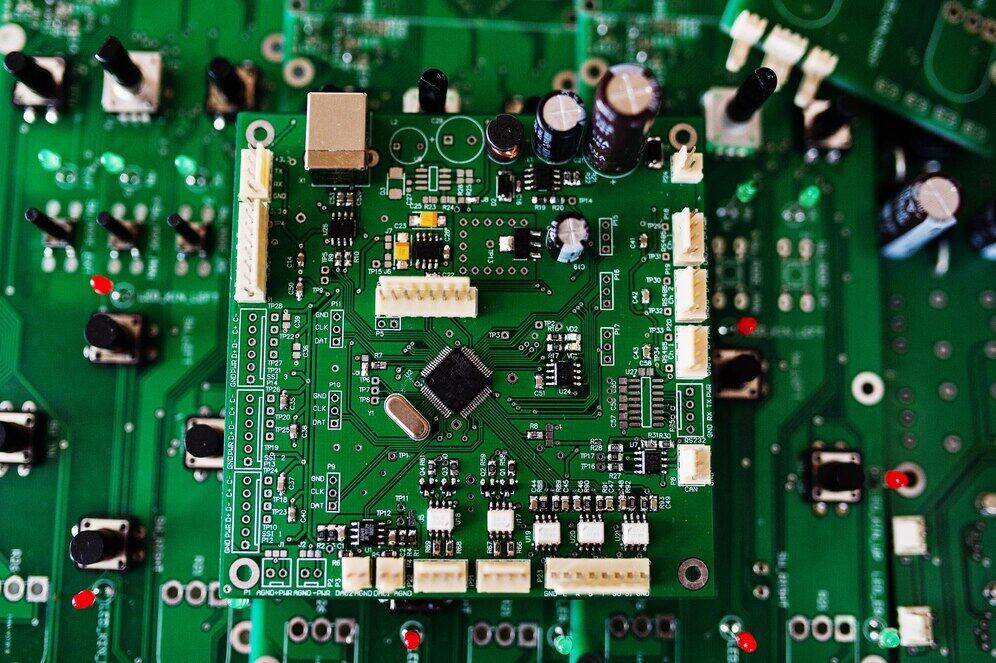E-postformatfel
emailCannotEmpty
emailDoesExist
pwdLetterLimtTip
inconsistentPwd
pwdLetterLimtTip
inconsistentPwd


The Electronic Component Industry Trends
In the heart of every technological marvel, from smartphones to supercomputers, lies a complex web of electronic components. These tiny yet powerful entities are the building blocks of our digital world. As we stand on the brink of a new era, the electronic component industry is undergoing a transformation that is as exciting as it is challenging. Whether you’re a tech enthusiast, an industry professional, or simply someone curious about the future, the trends shaping this industry are nothing short of fascinating.
The Pulse of Progress: An Overview
The rapid evolution of technology has put the electronic component industry at the forefront of innovation. As we navigate through this digital landscape, it's crucial to understand the key trends that are driving this sector forward.
Miniaturization: The Art of Smaller, Smarter Components
Miniaturization is not just a trend; it's a revolution. The quest for smaller, more efficient components has led to breakthroughs in design and manufacturing. This trend is driven by the demand for sleeker devices with more computing power.
The Drive for Efficiency
The push towards miniaturization is not just about aesthetics; it's about efficiency. Smaller components generate less heat and consume less power, making them ideal for battery-operated devices.
The Future of Moore's Law
As we approach the physical limits of silicon-based transistors, the industry is exploring new materials and technologies to continue the trend of miniaturization.
The Internet of Things (IoT): A New Frontier
The rise of the Internet of Things (IoT) has created a demand for components that can communicate and interact with each other. This interconnected web of devices is driving the need for more sophisticated and versatile electronic components.
The Expanding IoT Universe
From smart homes to industrial automation, IoT is transforming the way we live and work. The electronic component industry must adapt to meet the unique challenges and opportunities presented by this expanding universe.
Security and Reliability
As IoT devices become more prevalent, concerns about security and reliability grow. The industry is focusing on developing components that can withstand cyber threats and maintain stable performance.
5G and Beyond: The Speed of Connectivity
The advent of 5G technology has ushered in a new era of connectivity, with speeds that far surpass previous generations. This has significant implications for the electronic component industry.
Components for Speed
To harness the full potential of 5G, components must be designed to handle higher frequencies and data speeds. This requires innovative materials and designs.
The Road to 6G
While 5G is still being rolled out, research is already underway for 6G. The electronic component industry must stay ahead of the curve to support the next leap in wireless technology.
Sustainability: Greening the Industry
As the world becomes more environmentally conscious, the electronic component industry is under pressure to adopt sustainable practices.
Eco-Friendly Materials
The shift towards using eco-friendly materials in component manufacturing is gaining momentum. This includes the use of recycled materials and biodegradable components.
Energy Efficiency
Components are being designed with energy efficiency in mind, reducing the overall carbon footprint of devices and systems.
Artificial Intelligence (AI) and Machine Learning
The integration of AI and machine learning into electronic components is opening up new possibilities for intelligentizing and automation.
Smart Components
Components are becoming smarter, capable of learning from their environment and adapting their performance accordingly.
AI in Design and Manufacturing
AI is also being used in the design and manufacturing processes, leading to more efficient and precise production of electronic components.
The Impact of Trade Policies and Globalization
The electronic component industry is a global one, and trends in trade policies can have a significant impact.
Supply Chain Disruptions
The industry has faced disruptions due to trade wars and the COVID-19 pandemic, leading to a reevaluation of supply chain strategies.
Regionalization vs. Globalization
There is a growing trend towards regionalization as companies seek to mitigate risks associated with global supply chains.
The Human Touch: Skills and Talent in the Industry
As technology advances, so does the need for skilled professionals in the electronic component industry.
Training and Education
Investing in training and education is crucial to ensure a workforce that can keep pace with technological advancements.
The Battle for Talent
Attracting and retaining top talent is a challenge for the industry, as competition for skilled professionals intensifies.
Conclusion
The electronic component industry is at the crossroads of innovation and tradition, with trends that are shaping the future of technology. From miniaturization to sustainability, the industry is constantly evolving to meet the demands of a digital world. As we look to the future, one thing is certain: the electronic components that power our devices today will be unrecognizable compared to what they will become tomorrow. The journey ahead is full of challenges and opportunities, and it's an exciting time to be part of this dynamic industry.
Discover more about this industry by reaching out to us for further details. Contact us today to learn more!

